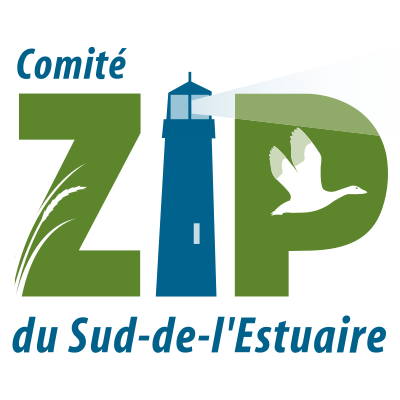In 2019, a group of landowners from the municipality of Saint-André with the support of the MRC de Kamouraska indicated their interest in relocating the dyke on a coastal segment between the Fouquette and des Caps rivers. The presence of erosion on this dyke and the occasional overflow of the waters of the St. Lawrence Estuary onto parts of the agricultural land justify this action of putting part of the agricultural land back into the sea.
Wildlife management has been proposed to increase the environmental resilience of the surroundings. This development targets land reclaimed north of New Aboiteau as well as degraded coastal habitats. It consists of the reconstruction of a salt marsh, the planting of native plant species on the new aboiteau and on the reclaimed agricultural land, the control of the common reed by various methods, and the restoration of fish habitat connectivity in the salt marsh through the direct transplantation of spartina alterniflora. These actions make it possible to recover 4.3 ha of coastal habitats. This environmental gain will increase the resilience of the entire coastal ecosystem in adapting to climate change.
Biophysical characterization includes botanical, ornithological and ichthyological inventories, geomorphological characterization of the coast, historical analysis using aerial photographs as well as low-altitude imaging surveys.
Mitigating the impacts of coastal jamming: The work done in 2020 includes (1) The transplantation of 30,000 alterniflora spartina plants on an area of 4.895 m², (2) The control of 22 colonies of common reeds over an area of 9.400 m², (3) The construction of a 545 m section of the new aboiteau, (4) The reconstruction of a marsh with an area of 5.700 m² by the development of wildlife channels and a consolidated opening in the aboiteau existing, (5) The planting of seedlings on bare land and (6) Biological monitoring.
The consolidated opening was made in the old dyke in order to let the water from the high tides pass and create a salt marsh.
Control of the common reed in a restored marsh: The work carried out in 2022 includes (1) the installation of 3 new tarpaulins totaling an area of 837 m², (2) the repeated mowing, twice, of 8 colonies totaling an area of 5,861 m², (3) the monitoring of 4,564 m² of tarpaulins, (4) the monitoring and manual control of 27 plant recovery points of the common reed, (5) the monitoring of the spatial variability of 8 colonies of common reed.


